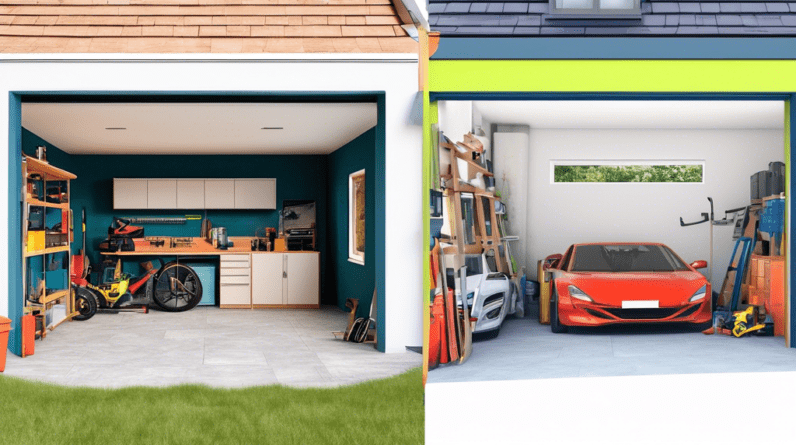
Dreaming of More Space? Your Ultimate Garage Conversion Cost Guide
Is your car longing for the great outdoors while boxes of forgotten treasures pile up in your garage? You’re not alone! Many homeowners grapple with the dilemma of underutilized garage space. But what if that space could transform into something extraordinary – a home office, a guest suite, or even that dream entertainment room?
A garage conversion offers an enticing solution, adding valuable square footage without the upheaval of a full-blown extension. However, embarking on this exciting project requires careful planning and a clear understanding of the costs involved.
Garage Conversion Costs: What to Expect
Let’s address the elephant in the room – how much will your dream garage conversion set you back? Unfortunately, there’s no magic one-size-fits-all answer. Costs are influenced by a multitude of factors, each playing a crucial role in shaping the final budget:
1. Location, Location, Location
Just like real estate itself, location plays a pivotal role in garage conversion costs. Here’s how:
- Regional Labor Costs: Construction labor costs fluctuate across the country. Metropolitan areas or regions with higher living expenses generally command higher labor rates.
- Permitting Fees: The intricacies of local building codes and permit requirements vary significantly. Some areas might have more stringent regulations, leading to higher permit fees.
2. Size Matters: Square Footage and Complexity
This one’s fairly straightforward – the larger the garage, the more materials and labor you’ll need. A single-car garage conversion will generally be kinder to your wallet than transforming a spacious double garage.
But size isn’t everything. Complexity also packs a punch:
- Simple Conversion: If you’re envisioning a basic transformation without major structural changes (think home gym or workshop), expect a more budget-friendly project.
- Complex Conversion: Adding a bathroom or kitchen introduces plumbing and electrical work, significantly impacting costs. Similarly, structural modifications like removing walls or raising the roof come with a higher price tag.
3. From Drab to Fab: Finishes and Fixtures
This is where your personal style gets to shine! But be warned, those design choices can either be budget-friendly or blow it out of the water.
- Flooring: From budget-friendly laminate to luxurious hardwood, the options are endless – and so is the price range.
- Walls and Ceilings: Basic drywall is kind to your wallet, while custom molding or exposed beams add architectural flair (and expense).
- Lighting: Recessed lighting, statement chandeliers, or simple fixtures – your choices impact both ambiance and budget.
- Plumbing and Electrical: If you’re adding a bathroom or kitchen, these costs can add up quickly. Opting for high-end fixtures will further impact the bottom line.
4. The Foundation of Comfort: Insulation and HVAC
Don’t underestimate the importance of a comfortable living space! Proper insulation and HVAC are non-negotiables, especially if you plan to use the converted garage year-round.
- Insulation: Adequate insulation is crucial for regulating temperature and minimizing energy costs. The type of insulation you choose will influence the cost.
- HVAC: Will you extend your existing system or require a separate unit for the converted space? This decision significantly impacts costs.
5. Unexpected Surprises: Budgeting for Contingencies
Construction projects, no matter how well-planned, can throw curveballs. Always factor in a contingency budget (around 10-20% of the total project cost) to handle unexpected issues like:
- Hidden Problems: Unforeseen issues like outdated wiring, plumbing problems, or structural damage might require attention.
- Permitting Delays: Securing permits can sometimes take longer than anticipated, potentially affecting the project timeline and associated costs.
Maximizing Your Investment: Cost-Saving Tips
Converting your garage doesn’t have to break the bank! Here are some savvy strategies to make the most of your budget:
- DIY Where Possible: If you’re handy, tackle some tasks yourself – painting, demolition, or even installing flooring.
- Shop Smart: Compare prices for materials and fixtures. Explore discounts at home improvement stores or consider reclaimed materials for a unique touch.
- Prioritize Spending: Allocate your budget strategically. Splurge on items that truly matter to you, and find cost-effective solutions for less crucial aspects.
- Communicate Clearly: Maintain open communication with your contractor throughout the project to avoid misunderstandings and costly changes down the line.
Garage Conversion: Is It Right for You?
A garage conversion is a fantastic way to expand your living space, add value to your home, and enhance your lifestyle. While costs can vary significantly, careful planning, research, and budgeting will help you achieve the garage conversion of your dreams without breaking the bank.
Ready to transform your garage into a stunning new space? Contact a reputable contractor today for a personalized consultation and turn your vision into reality!






